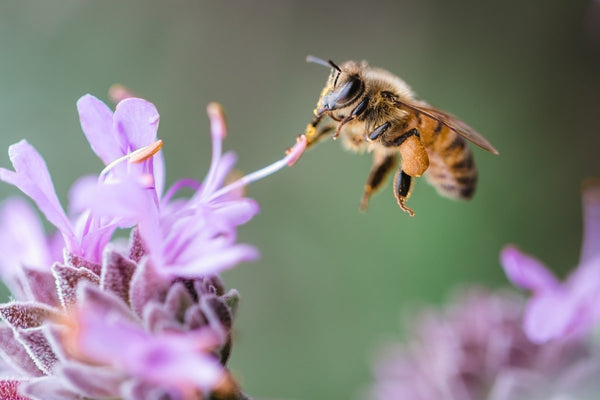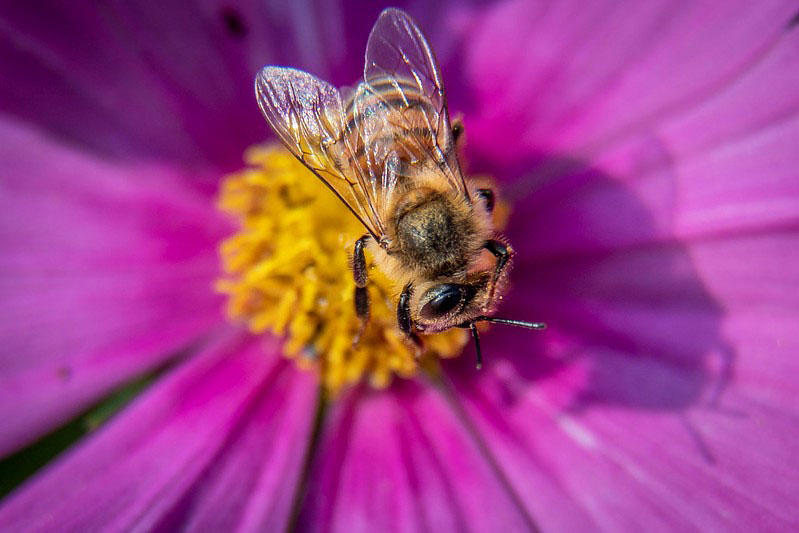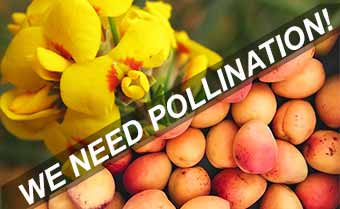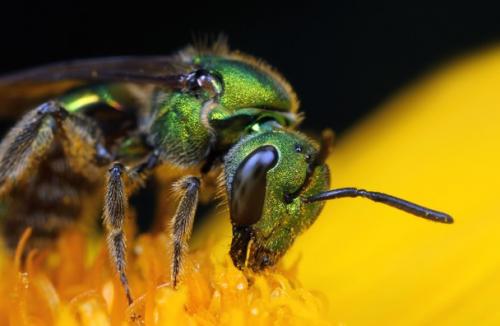1 Why bees are so important to the environment
- Author: environment.sa.gov.au
- Published Date: 11/25/2021
- Review: 4.98 (982 vote)
- Summary: That’s an easy question – yes. Put simply, bees pollinate our plants, which means they carry pollen between plants of different sexes to fertilise them, or even
- Matching search results: It’s less likely you’ll be stung by a native bee than a European honey bee, as these bees are aggressive and defend their hive. Native bees generally don’t build hives, which means this isn’t much of a problem, and the native bees that do build …
- Source: 🔗
2 The Benefits Of Bees To Your Garden (When Well-Controlled)
- Author: jppestservices.com
- Published Date: 01/07/2022
- Review: 4.77 (523 vote)
- Summary: · As they feed, bees spread pollen from flower to flower – a process called pollination, which is critical for plants to reproduce, produce seeds,
- Matching search results: If you live by a body of fresh water, your job may already be done for you. However, for those living in drier or hotter climates, it might be a good idea to provide a small birdbath with clean, fresh water ready for the taking. That way, bees can …
- Source: 🔗
3 The Role of The Bee

- Author: edntech.com
- Published Date: 11/23/2021
- Review: 4.59 (275 vote)
- Summary: · Flowers rely on bees to cross-pollinate their female plants. When bees feed on the pollen, their body picks up excess via their pollen-
- Matching search results: Bees are thought to be one of the first intentional pollinators that coincided with flowering plants dated back to 120 million years ago. Unlike unintentional pollinators, such as beetles and flies that managed to accidentally carry pollen from …
- Source: 🔗
4 About Pollinators | Pollinator.org
- Author: pollinator.org
- Published Date: 03/27/2022
- Review: 4.29 (283 vote)
- Summary: They visit flowers to drink nectar or feed off of pollen and transport … [1] of all flowering plants on the earth need help with pollination – they need
- Matching search results: Pollinator populations are changing. Many pollinator populations are in decline and this decline is attributed most severely to a loss in feeding and nesting habitats [8, 9]. Pollution, the misuse of chemicals, disease, and changes in climatic …
- Source: 🔗
5 The Why, What, When, Where, Who, How of Pollination
- Author: gardens.si.edu
- Published Date: 01/27/2022
- Review: 4.1 (348 vote)
- Summary: Pollination is an essential part of plant reproduction. Pollen from a flower’s anthers (the male part of the plant) rubs or drops onto a pollinator. The
- Matching search results: Moths: Most moths go unnoticed even though they outnumber butterflies 10 to 1. Why? They are often active at night and dull in appearance. Night-blooming flowers have sweet scents and white or cream colored blossoms that reflect the moonlight to …
- Source: 🔗
6 Why do we need bees?
- Author: friendsoftheearth.uk
- Published Date: 12/29/2021
- Review: 3.88 (558 vote)
- Summary: Bees are perfectly adapted to pollinate, helping plants grow, breed and produce food . They do so by transferring pollen between flowering plants and therefore keeping the cycle of life turning
- Matching search results: The vast majority of plants we need for food rely on pollination, especially by bees: from almonds and vanilla to apples and squash. Bees also pollinate around 80% of wildflowers in Europe, so our countryside would be far less interesting and …
- Source: 🔗
7 The Value of Birds and Bees

- Author: farmers.gov
- Published Date: 10/26/2021
- Review: 3.63 (410 vote)
- Summary: · In return for a delicious meal, these animals help the plants reproduce by moving pollen between the male (anther) and female (stigma) parts of
- Matching search results: More than 80 percent of the world’s flowering plants need a pollinator to reproduce; and we need pollinators too, since most of our food comes from flowering plants. One out of every three bites of our food, including fruits, vegetables, chocolate, …
- Source: 🔗
8 Pollination Mechanisms and Plant-Pollinator Relationships

- Author: extension.missouri.edu
- Published Date: 07/18/2022
- Review: 3.54 (273 vote)
- Summary: In the plant-pollinator relationship, the pollinator benefits by feeding on food rewards provided by the flower, primarily nectar and pollen. In return, the
- Matching search results: With knowledge of the variety of pollinators found in Missouri and the unique adaptations of each to a pollinator lifestyle, you can support different types of pollinators on your land, and best use them to ensure seed and fruit production through …
- Source: 🔗
9 WHAT IS POLLINATION AND WHY IS IT IMPORTANT?

- Author: aussiebee.com.au
- Published Date: 10/25/2021
- Review: 3.21 (316 vote)
- Summary: Thousands of species of bees and other animals help pollinate our plants. Without pollination, our wildflowers would die out and many crop plants could not
- Matching search results: Bees are particularly good pollinators because they need pollen to feed their young in their nests. During the day, bees visit hundreds of flowers to collect this pollen. Each time that they fly off to another flower, they leave some pollen on the …
- Source: 🔗
10 Growing a variety of flowering plants helps bees and other beneficial

- Author: canr.msu.edu
- Published Date: 04/06/2022
- Review: 3.13 (379 vote)
- Summary: · Bee-friendly plantings will benefit other beneficial insects … Another important benefit of growing flowering plants is that they provide nectar
- Matching search results: Although some annual flowers like marigold, verbena and salvia are better than others for bees, almost all annuals are visited by bees, and they bloom all through the growing season. Perennial flowers, like salvia, any of the mints, coneflowers and …
- Source: 🔗
11 Bees Can Sense the Electric Fields of Flowers
- Author: nationalgeographic.com
- Published Date: 04/10/2022
- Review: 2.95 (149 vote)
- Summary: · The bees, in turn, change the charge of whatever flower they land upon. … then the bee will benefit and the flower will communicate
- Matching search results: The bees, in turn, change the charge of whatever flower they land upon. Robert’s team showed that the electrical potential in the stem of a petunia goes up by around 25 millivolts when a bee lands upon it. This change starts just before the bee …
- Source: 🔗
12 Bees, Butterflies, and Flowers | Carolina Knowledge Center
- Author: knowledge.carolina.com
- Published Date: 05/20/2022
- Review: 2.83 (146 vote)
- Summary: Since plants do not expend resources looking and competing for a mate like animals … Flowers are plants’ reproductive parts, which help them spread their
- Matching search results: Unlike bees, butterflies can see the color red, so many of the flowers they are attracted to are colored bright red, pink, or purple. Similar to bees, butterflies can see light in the UV spectrum and lots of the flowers that attract butterflies have …
- Source: 🔗
13 How Flowers and Bees Evolved to Meet Each Others Needs
- Author: storey.com
- Published Date: 01/02/2022
- Review: 2.66 (128 vote)
- Summary: ULTRAVIOLET INVITATIONS. Bees can see ultraviolet light but not red light; thus, flowers in the ultraviolet range attract more bee visits, while red-hued
- Matching search results: OF COURSE, POLLINATORS MOST OFTEN visit flowers for nutrient-rich food rewards: pollen and nectar. The availability and quality of these rewards vary depending on time of day, environmental factors, and an individual plant’s life cycle. And from the …
- Source: 🔗
